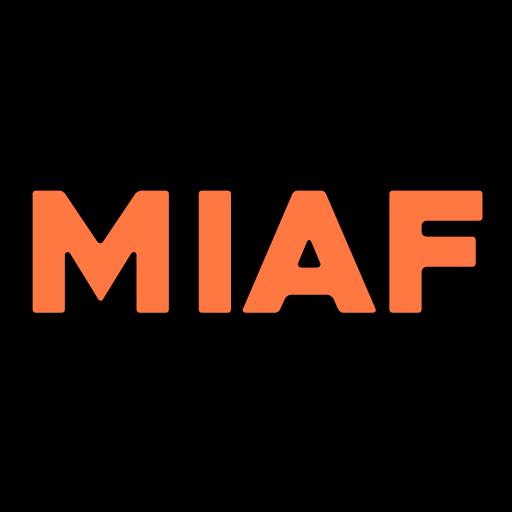What follows is an extended introduction to LIAF 2016’s International Competition Programme 4: New Japanese Shorts: Beyond Anime. Find out more here.
Animation is such a frustratingly ubiquitous term. As a descriptor it lacks precision and in the crowded marketplace of cultural recognition the word ‘animation’ acts a smokescreen obscuring what is arguably the largest and most dimensional part of its very soul. In this it is more or less unique among the arts.
This massive blind-spot relegates the vast majority of animation that is – and ever has been – created to an alternative universe whose very existence is simply unknown to all but aficionados of the art form. In the process it comes close to obliterating animation’s claim to being an art form at all.
The giant bulk of all animation created is more or less invisible. We are preaching to the converted here, of course. If you are reading this you will know the names that sit at the pinnacle of an Everest-sized mountain of animated creativity – Priit Parn, Chris Landreth, Georges Schwizgebel, Barry Purves to name just a few of the contemporary recognised living masters. They stand on a history bedrocked by names such as Norman McLaren, Oskar Fischinger, Ladislaw Starewich and Emile Cohl.
In the century or so that cinema has existed, the number of animated films that have been produced by the members of this artistic branch of creative endeavour could – conceivably – run to seven figures. Annually we here at LIAF view well in excess of 3,000 films and the flow shows no signs of ebbing. And yet this trove of extraordinary imaginative imagery is completely unknown to probably more than 95% of the population. Completely unknown.
Sit it beside what people do tend to recognise as animation – an annual disgorge of 30 or 40 mostly 2-star formulaic kids feature films and two or three hundred TV shows of wildly varying creative and emotional substance – and a picture of sorts emerges of a very fractured knowledge and understanding of what animation is.
Anime easily gets bound up in this discussion. The fact that it is animation is self-evident and as an art form it has more than earned its huge legions of fans and deserves the academic and pan-cultural attention it has garnered. It is a vibrant, complex and compelling form of filmmaking replete with a century-long roster of masters, cult characters and a fascinating history and development.
However, from a perspective that seeks to encompass the entire ‘animation’ canon, anime is but one branch of that canon. And yet it has increasingly come to almost generically mean ‘animation from Japan’.
Definitions of what constitutes anime vary to some extent, and have been splintered further by the wider, easier and more rapid dissemination of all forms of moving image art to an increasingly international audience. The picture is also made a little murkier by the fact that in Japan the term ‘anime’ simply means ‘animation’ which – for example – sees collections of Tom & Jerry cartoons referred to as ‘overseas anime’.
It is probably fair to say that the general perception of what constituted an anime film revolved, to a great extent, around its visual style and the particular narrative parameters that contained the films. The most obvious stylistic elements included the large, highly definitive eyes and the brightly coloured, starkly designed hair of the characters. The storylines also tended towards fantastical, though fairly linear, narratives which had a strong sense that they were infused with the feel of comic books brought to life.
The Japanese audience simply took anime to its heart as a part of its own, diverse cultural smorgasbord. But as the appeal and availability of anime to a larger western audience spread, that audience saw it as a more niche and specialised product. They also tended to see it as an alternative – in fact, the ONLY alternative – to mainstream animation. Largely bereft of any inkling of the existence of a vast catalogue of complex, diverse and highly artistic animation made in their very midst, this audience began to assume that anime was simply any animation from Japan. Thus ‘anime’ became ‘animation’ when contrasted to the various and established tropes of live-action cinema. And because anime seemed so different than the extremely narrow thread of mainstream animation known at the time and because it was from Japan, ‘anime’ as a term was diluted once again to that of an assumptive misnomer for animation made in Japan.
In truth, Japan produces much animation that has little or no particular association with what is broadly considered anime. Certainly, in a place in which anime is such a powerful and recognised element of the local culture, traces and flavours can tinge the elemental weave of some of the auteur animation made there. But much Japanese animation has a lot in common with that created by the broader international animation community.
This programme is but a taste of that. As a competition programme all of these films are recent releases and cumulatively speak to the diversity of genres, styles, techniques and aesthetics of the animation emerging from anywhere, but in this case created solely in Japan.

For example, Don’t Tell Mum by Kawako Sabuki continues her jaw-dropping ability to get away with animating subject material that could only be described as a kind of hilariously demented, pornographic piece of stream of consciousness – in vivid technicolour. Presenting anything in this film live-action would be out of the question, as much for the physically impossible demands it would make upon the most flexible and adventurous of actors as for fear of having nothing left after the censor had finished the scissor work. Classic anime has plenty of instances in which characters are sexualised to some extent but fully expressive, full frontal and explicitly depicted sexual content and activity is normally out of bounds.
Abstraction is also not something anime tackles. However in Mirai Mizue the world of animation has one its more accomplished and prolific exponents. To keep up with that output we have had to include two of his latest films in this programme – there were more on offer. Age Of Obscure is perhaps more organic and a little less geometrical and mathematical than his earlier films, but its pace, complexity and sheer visual beauty is spectacular. Retro Future is all straight lines and moving Escheresque perspective puzzles but, interestingly, carries a soundtrack by Matsuo Ohno, a legendary musician, composer and soundtrack artist.
AGE OF OBSCURE -trailer- from MIRAI_MIZUE on Vimeo.
Likewise, the latest ‘light-painting’ extravaganza from Japanese collective Tochka, titled Track, is a kind of pixilation/stop-motion blend that would never be categorised as anime. Continuing the point, this programme features sand animation and independent films that have a beautifully pastel painterly quality to their look and a reflective/contemplative pacing to their narrative.
Rounding out the case, we have included several films from Japan’s two main animation courses at Tokyo University of the Arts and the Tama Art University in this line-up. The films that emerge from these courses are as diverse as the people who made them. But they reinforce Japan’s status as a powerhouse of stylistically diverse and creatively artistic animation.
And great anime too….. but that’s a different story.
Malcolm Turner, MIAF Director
















